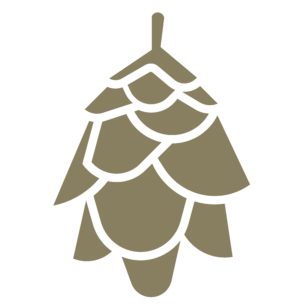INTERVIEW: NELSON GUTIERREZ
OCT. 19, 2024

INTERVIEW: NELSON GUTIERREZ
OCT. 19, 2024
Rachel Bubis: Your work explores “the psychological and social implications of conflict” - whether that be through examining war, dissent, or even the history of dog fighting. Have you always been interested in this subject?
Nelson Gutierrez: I make art based on my life experiences, and the work is informed by personal memories, people I have met, places where I have lived and visited, environments, and events that have formed and influenced my life throughout my career.
According to Susan Sontag, “All memory is individual, unreproducible - it dies with each person. What is called collective memory is not a remembering, but a stipulating that this is important and this is the story about how this happened with images that lock the stories in our minds. Images are an invitation to pay attention, to reflect, to learn, to examine. Images help construct and revise our sense of a distant past.” * Susan Sontag. Regarding the Pain of Others. Picador. 2003.
I grew up in Colombia, a country with a long, continuous history of internal conflict. Since the late 1940s Colombia has been in a civil asymmetric war between the Colombian governments, left-wing communist guerrillas such as FARC, ELN, EPL, and M19; right-wing paramilitary groups like AUC and Convivir, and other criminal groups like the so-called Drug Cartels, fighting each other to increase their control over the Colombian territory.
Between 1958 and 2024, nearly half a million Colombians have been killed in the conflict, most of them being civilians. In the past five decades, seven million people have been displaced from their homes, 12,390 have fallen victim to landmines, and 40,000 have been kidnapped.
Although the majority of the fighting happened in remote rural areas, inhabited mountains, and jungles, there were many cases of terrorist attacks in cities (including Bogota, where I used to live) which increased in the mid-80s to the early 90s.
Juan Gabriel Vasquez wrote, “During this time, to press the government to ban extradition laws, the Medellin cartel bombs used to explode in the main cities, in places carefully selected by the narcos with the only purpose of killing innocent citizens who didn’t take part in this war (except all of us were part of the war, and we were naive in thinking otherwise).” * Juan Gabriel Vasquez. The Shape of the Ruins. Alfaguara. 2015.
Growing up in this environment has significantly influenced my work. When you are constantly surrounded by turmoil, you reach a point where you become desensitized to it. You simply want to maintain a regular day-to-day life and tend to overlook what is happening around you, deliberately ignoring certain aspects of your own reality.
One of the purposes of my work has been to highlight this unbalanced reality, and to encourage people to engage in critical debate about the daily violence in Colombia, challenging the public's habitual tendency to overlook and not think deeply about it, with the aim of rekindling empathy.

Nelson Gutierrez, The Walk, 2024, mat board, Plexiglass, linen, wood, 22" x 22"
RB: Can you tell me about your process? I imagine there is a lot of research involved. Do you do sketches?
NG: My work doesn’t have a particular “style”. My use of mediums is broad-based, and I don’t follow a formula in developing a series of works. In that sense, each group of works has a different process. The works are based on single topics and ideas, some of them are thought to be just paintings or drawings, while others call for the use of another specific medium that requires a longer, more complex process.
For my current series, A Journey into the Shadows, the process begins with hand drawings of individual migrants walking, some of them with their personal belongings. These drawings are then digitalized and converted into tridimensional cutouts by laser cutting them in MDF and acrylic. Using high-definition projectors, light is shone through the 3D cutouts to project the shadows of the objects. The 3D objects are mechanically and manually moved while their shadows are cast onto different surfaces. I have created three mechanical rotary bases to keep the sculpture continuously rotating during the presentation of the work. The shadows of the moving images, offer a character-driven narrative that slowly turns into overlapping shadows creating masses of unrecognizable forms.
Additionally, rotating the 3D cutout causes the light to hit the objects so that the shadows almost disappear, becoming single lines. This line symbolizes how displaced people can disappear into the shadows by leaving their homes behind, facing neglect from their government, and entering unfamiliar environments. In a way, the movement of the cutouts that then affects the shadows is what tells the story.
Research plays a crucial role in developing a unique perspective of the artwork, gathering visual and written information about specific topics is a crucial part of the process, generating fresh ideas, and establishing a strong foundation for the work. It also helps in focusing on the most significant points, thus adding depth and meaning to each project.
Drawing and sketching have always been a core medium in my practice, and it’s through drawing that I first approach the development of an idea. Drawing is a way of testing ideas, a slow version of thought. The uncertain way of making a drawing is also a mechanism for building meaning. What ends in clarity doesn’t begin that way.
I self-published a book in 2011 called Projects. It contains a small selection of my drawings and sketches, illustrating the significance of this practice in my work from the mid-1990s to 2011. https://www.blurb.com/b/1987501-projects
RB: You use a variety of materials such as charcoal, ink, wood, metal, blood, wax, water, glass, light, and photographs. In doing so, you say you hope to “express feelings of collective longing, fear, grief, and hope,” and “speak to our shared humanity in a way that is relatable to all.”
At what stage of your process do you choose your materials? Where do you source them from? Do you collect materials that inspire you for future use?
NG: Different materials convey different meanings. The selection of materials comes from their relation to the subject being explored in the work, they add a layer of meaning to the artwork. For instance, in the Earth Fragment series, the use of clay (ceramics), a natural material directly extracted from the earth, refers to the fight for territorial control and the deployment of landmines for this objective. In the Bridges installation, I made glass pieces to denote fragility and instability when referring to peace dialogues in Colombia in 1999. In the current series of works, A Walk into the Shadows, shadows are used as a metaphor for being displaced from home and having to confront the unknown.
When I have an idea that involves a non-traditional material, I usually obtain the materials after that idea is developed. I don’t have a collection of materials for future projects.
RB: Your work examines some difficult and often violent subjects such as forced displacement and migration, riots and protests, and missing victims. Does it ever affect you emotionally to dive into these subjects? Does it feel cathartic? Can you tell me about any insights you’ve gained while examining these subjects? How do you remain hopeful?
NG: Exploring such challenging and often distressing subjects does have an emotional impact on me. It can be difficult and overwhelming to delve into these topics, knowing the suffering and injustice that people have endured. However, I believe that shedding light on these issues through my work helps bring attention and empathy to those affected. In some ways, engaging with these subjects can be cathartic. It allows me to process and express my own emotions and thoughts about these complex issues. Through my work, I aim to create a dialogue and raise awareness about these difficult realities, which can provide a sense of purpose and meaning in addressing these topics. One insight I've gained from examining these subjects is the resilience and strength of individuals facing adversity. Despite the hardships they endure, there is a remarkable ability for people to find hope, support each other, and strive for a better future. Witnessing this resilience has been a source of inspiration and a reminder of the human capacity for compassion and perseverance. Remaining hopeful amidst these challenging subjects can be a struggle at times, but I find hope in the power of empathy, understanding, and collective action. By fostering conversations and encouraging empathy through my work, I believe in the potential for positive change and a more compassionate society. Additionally, seeing the impact of awareness and advocacy efforts gives me hope that change is possible, even in the face of difficult and deep-rooted issues.
RB: Have you ever been surprised by someone’s response to your work?
NG: Yes, sometimes. When people approached a large grid made of several drawings of protesters in The Death of Fear, some of them saw athletes, ninjas, and someone else thought it was calligraphy; although they may have missed the message of the work, they appreciated the drawings and took the time to interpret it for themselves.
I want people to appreciate my work for its artistic qualities. In some cases, it is a bonus when people become aware of the specific issues expressed in the art. Other times, encountering unexpected responses is beneficial because they may help me to consider facts that I haven’t previously contemplated.

Nelson Gutierrez, A Journey into the Shadows, 2024, wood, MDF, enamel, motor, projector, variable dimensions, presented at Crosstown Arts, Memphis, TN
RB: You are from Colombia, but are currently living and working in Memphis. Have you noticed any surprising parallels and/or stark differences between the two places or other places you've lived (in regards to your work)?
NG: In my experience as an artist, I've observed some challenging parallels and differences in social issues between Colombia and Memphis, as well as other places I've lived. In Colombia, I was exposed to a range of social issues such as inequality, the impact of historical conflicts, and the resilience of local communities. In Memphis, I've encountered distinct challenges related to racial equality, economic disparities, and the ongoing quest for social justice. Also, the political dividing gap in our societies has similarly, become wider in recent times.
I left Colombia about 25 years ago, I first moved to the UK where I did my postgraduate studies, before moving to the US, where I have lived in Miami, Washington, DC, and now Memphis. Since leaving, I’ve had the opportunity to see Colombia’s problems from a different perspective, to see the whole picture that helps me realize the magnitude of the problems that the conflict has created in Colombia's society. Moving also helped me to realize that some of those issues are not exclusive to Colombia.
Regarding my work, I see universal similarities when working with some topics, like global unrest in The Death of Fear and Mandala series, observing anti-government protests, uprisings, and armed rebellions that spread across the Middle East in 2011. Around the same time in the U.S., millions of people supported the Occupy Wall Street movement around the country, protests also spread throughout Europe after the economic crisis and growing economic inequality in some countries. We saw huge demonstrations in Iceland, Spain, Greece, Cyprus, Italy, Portugal, Germany, Ireland, France, and the UK, and In Latin America, we also saw protests in Chile, Venezuela, Colombia and Peru. As spectators of world news, individual intentions are often lost, relativity is usually dismissed, and unfortunate generalizations are regularly made to homogenize an entire group. However, through this work, I also wanted to emphasize the individual experience of action for change, while revealing a universal common denominator: the fearless search for a better life.
In 1996, I made a small series of paintings called Invisible Population about forced displacement in Colombia. When revisiting this subject, I’ve included in my research the broader global problem of forced displacement and migration which is affecting every corner of the world, from the civil wars in Myanmar, Haiti, and Sudan, and the forced occupations of Ukraine and Palestine to the displaced American communities due to natural disasters like hurricanes, wildfires, and flooding.
RB: What are you working on now and what’s next?
NG: As mentioned before, my current work A Journey into the Shadows, is based on forced displacement and global migration, this work is an exploration into the practice of drawing, addressing this practice in ways that expand its traditional limits. It uses formal elements of drawing and includes 3D works, which with lights, cast overlapping shadows that create masses of unrecognizable shapes, presenting a flexible, alternative world that can be modified, drawn, and redrawn.
With the support of the Current Art Fund grant, and Tri-Star Arts, I created and have been presenting this work as large-scale public installations, the more recent presentation was done at Crosstown Arts Theater.
Some of these works are currently on display at the Dixon Gallery and Gardens in Memphis, as part of the Memphis 2024 exhibition.
Additionally, I was recently selected as the 2024 Tennessee Fellow for Visual Arts by South Arts, alongside visual artists from each state in South Arts region: Alabama, Florida, Georgia, Kentucky, Louisiana, Mississippi, North Carolina, South Carolina, and Tennessee.
The State Fellows for Visual Arts works will be on display in a touring exhibition, which opens in October at the Art and Culture Center in Hollywood, FL, before moving to additional venues across the South Arts nine-state region. It will be on tour until December 2025.
I also have an invitation to show my work in a two artist exhibition alongside Althea Murphy-Price at Sheet Cake Gallery in January 2025.

Nelson Gutierrez, A Journey into the Shadows, 2024, wood, Acrylic enamel, motor, projector, variable dimensions, presented at Dixon Gallery and Gardens, Memphis, TN
Nelson Gutierrez graduated from the Universidad de Bogota Jorge Tadeo Lozano in Bogota, Colombia. Upon receiving his BA degree in Fine Art, he began addressing the social and psychological implications of Colombia’s armed conflict on its civil society. His artistic process have led him to use a variety of different mediums including drawings, paintings, 3D objects, spatial constructions, and installations. In 1999, he received his MA degree in Fine Arts from Chelsea College of Art and Design in London UK. He worked as a professor in the Fine Arts Departments at the Universidad de los Andes and the Universidad de Bogota Jorge Tadeo Lozano in Bogota, Colombia. In 2002, he moved to the USA where he continued developing and showing his artwork in addition to working as a teaching artist for different organizations such as Arts for Learning in Miami, FL, Children’s Studio School in Washington, DC, and the Workhouse in Lorton, VA. During his time in DC, he also attended the Corcoran College of Art where he did coursework in the MFA program.
Since 2014, he has lived and worked in Memphis, TN where he has served as an Exhibition Committee Member for the Memphis Brooks Museum of Arts, an Artist Advisory Council Member for ArtsMemphis, and an Official Advisor for Tri-Star Arts in Knoxville, TN. He has also worked in some public art projects in the city, including the Memphis Upstanders mural at Facing History and Ourselves and the Stairwell murals in the Fogelman Building at the University of Memphis.
Rachel Bubis is a Nashville-based independent arts writer, regular contributor to The Focus blog, and LocateArts.org Web Manager for Tri-Star Arts.
* images courtesy of the artist


